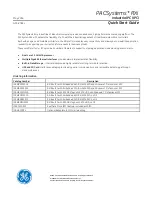
61
OPEraTING SySTEMS
4.4.2 How EWf works
EWF protects a volume from write access. This is realized by an EWF overlay: EWF
protects the contents of a volume by redirecting all write operations to another storage
location. This location is called an overlay. An EWF overlay can be in RAM, or on anoth-
er disk partition. An overlay is conceptually similar to a transparency overlay on an over-
head projector. Any change that is made to the overlay affects the picture as it is seen in
the aggregate, but if the overlay is removed, the underlying picture remains unchanged.
When EWF is enabled for a volume, every write operation to that volume will be redirect-
ed to an overlay in RAM and no data will be persistently stored into the volume. In case
of a reboot or of a system restart after a power failure, the overlay will be reset and all
the data written in the previous session will be lost. The view of the volume will be the
same, after every reboot. Thus the content of the volume is protected by any damage
which can be caused by power fails otherwise.
4.4.3 Protectable Volumes
Volume
Protecable Intention
C:\
Yes
Holds the operating system (including the registry) and the
installed programs. Should be protected to ensure that the
system never becomes unbootable.
D:\DaTa
No
For free data storage, future use
E:\CfaST
Yes
Holds the Control and HMI applications. Should be protect-
ed to ensure that the applications never become invalid.
Table 8:
Volume protection
4.4.4
KEB EWF configuration
On KEB devices RAM overlay is used and the EWF configuration is stored in the regis
-
try of the WES7 operating system, which resides with the operating system on volume
C:\. This implies that changes to the EWF configuration are only possible if the EWF
for volume C:\ is disabled or the changes to C:\ will be committed. Otherwise they will
be discarded after a reboot. The following table shows the dependencies between the
volumes:
















































